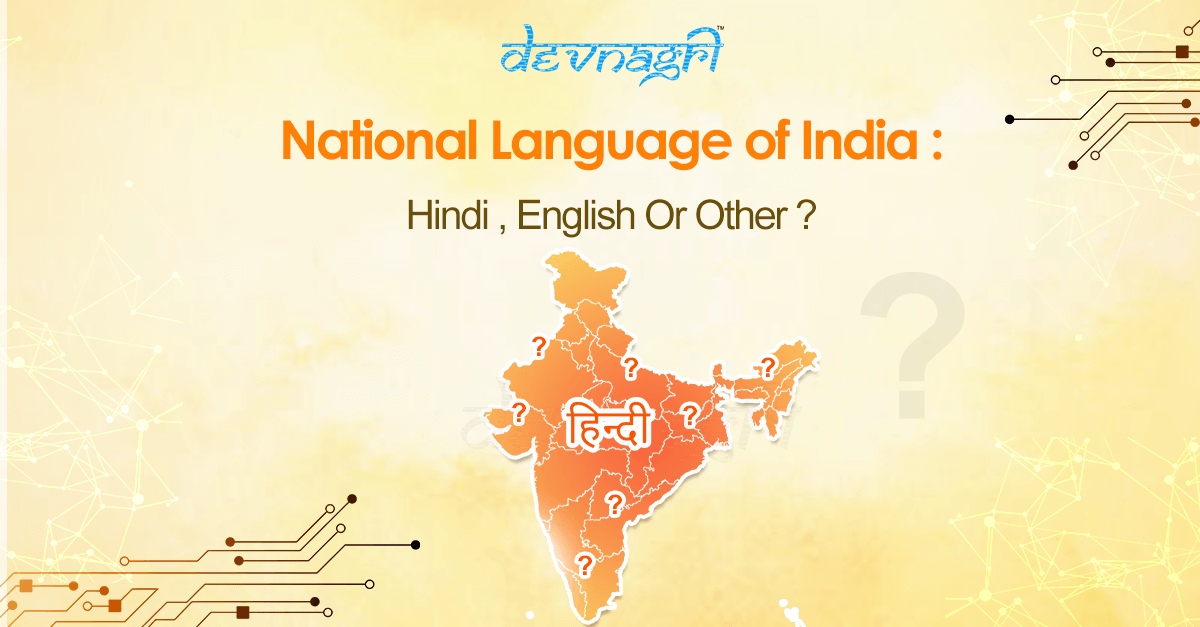
An overview of the national language of India:
India is a country of many languages, with more than 2,000 dialects spoken across the country. There are 28 states and 8 union territories each of which has many regional dialects. The multilingualism of the nation leads to the question of what the national language of India should be has been a contentious issue for many years.
There has been a constant debate and speculation on whether India has any national language. However, the answer to this is that India does not have a national language. The constitution of India has recognized 22 regional languages based on the states and regions where they are spoken.
Also Read: Maximizing productivity with an image to text converter online: a comprehensive guide
Which is the national language of India?
Hindi is one of the oldest languages in the country. It is an Indo-Aryan language and has its roots in Sanskrit, an ancient language of India. The earliest forms of Hindi can be traced back to around 1000 AD, Hindi is one of the most widely spoken languages in India.
According to the 2001 census, 41% of Indians speak Hindi as their first language. This makes Hindi the most widely spoken language in the country, followed by Bengali, Telugu, and Marathi. However, despite many efforts and discussions to make Hindi the national language of the country, Hindi still enjoys the status of a regional language and it is also the official language of Bihar, Delhi, Haryana, Jharkhand, Madhya Pradesh, Rajasthan, Uttarakhand, and Uttar Pradesh.
Also Read: How DOTA is revolutionizing language translation in the digital age?
What does the Indian constitution state about the national language of India?
According to Article 343(1) of the Indian Constitution, Hindi written in Devanagari will be the Union’s official language. For all official purposes of the Union, the international version of Indian numerals shall be used.
In the Indian parliament and government buildings, only Hindi or English is permitted for official business. English may be utilized for official reasons throughout the country, including parliamentary sessions, correspondence between the Central Government and a State Government, and legal processes.
According to Article 343, the Central Government only communicates in Hindi with the states within the Hindi Belt. English is to be used as an Associate Official Language when communicating with the states.
Also Read: Qualities of a Good Website Translator
The Debate- National Language Vs Official Language
Well, there has been a long ongoing debate and discussion on the national language of India. As per the definition, the language spoken by a sizable amount of the population in the country can be considered the national language. The language can be officially declared and used for government communications, the parliament of business, and social, cultural as well as political reasons. As per article 343 of the Indian constitution, the central government will use Hindi to communicate with the Hindi-speaking states in the country. Moreover, English will be used as an associate official language. Therefore, Hindi and English are the official languages of India and not the national language.
Also Read: Reasons Why Document Translation is Important?
Conclusion
Thus, the question of what the national language of India should be is a complex and controversial issue. On one hand, Hindi is the most widely spoken language in India and has strong ties to Indian culture and history. On the other hand, English is the primary language of education and business and is an international language spoken and understood by many around the world. The only possible way out of this is adopting a multi-lingual approach by giving importance to the official regional languages as well as English.





